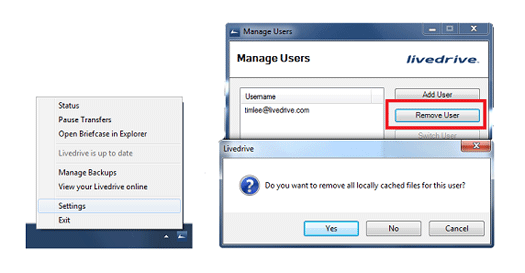Technical Help
Windows
Windows Users: How to Backup a NAS/Network Drive
With Livedrive Backup, Pro Suite or Business accounts, you can backup your NAS (Network Drive) devices. For home users NAS devices are additional purchases per NAS and can be purchased via your web portal.
Please note: Backups are not to be used for archiving. You must at all times hold an original copy of the data in the original location on the system it was backed up from. If you delete files from your computer that have been backed up we will remove the corresponding backup from our servers.
If you wish to only backup your NAS device, you must still install Livedrive on your local hard drive and select at least one local file for backup.
Things to remember when backing up your NAS:
- There is a limit of 5TB for any single external drive including NAS devices and USB drives.
- You must ensure that the device is attached whilst running Livedrive
How to Backup your NAS
Mapping your NAS device
You must ensure that the device is mapped as a letter drive. To map your NAS,
- Open a Explorer Window
- Click Map network drive (For Windows 8 users - expand the ribbon in the top right corner near the 'x' button or press CTRL + F1, and then click on Map network drive)
- Select a letter and browse to the NAS device
- Click Finish
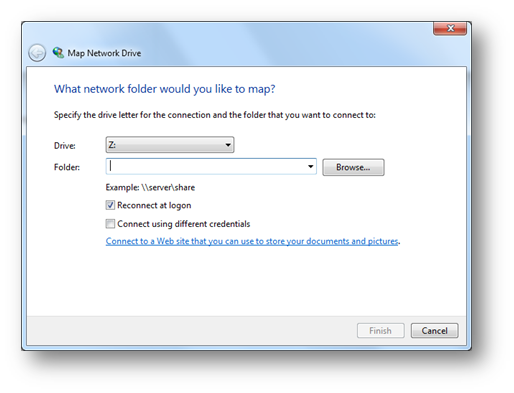
Selecting your NAS files for Backup
- Click on the Livedrive icon
- Select Manage Backups
- Expand the NAS device letter by clicking on the '+'
- Select the files or folders you wish to backup - do not backup from the root of the NAS device, e.g. only select folders within the NAS device
- Click OK
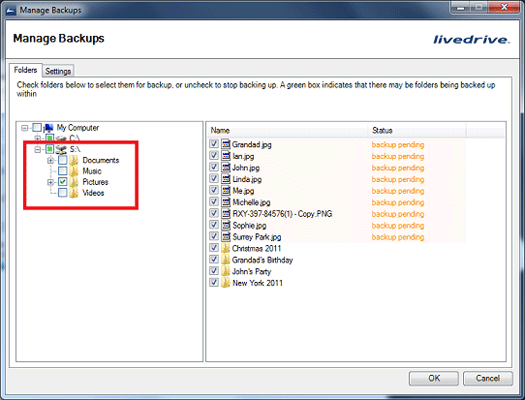
That’s it! Livedrive will now start backing up your NAS device. Your web portal will display the backup as a folder within your backup set.
Mapping Network Drive on XP
Running Windows XP? Not sure how to map a NAS device?
The following article will show you how to map a network device: http://support.microsoft.com/kb/308582
Configuring your Livedrive Backup Scheduled Scans
Once your initial backup is complete, you can set your Livedrive software to run schedule scans of your files and folders to checking for any changes made to the file.
Livedrive will upload modified files during the scan and save the file as another version.
The schedule scan can be set to backup once every hour (up to once every 48 hours), between certain times or real time.
To configure your Livedrive schedule scans:
- Click on the Livedrive icon
- Select Manage Backups
- Click on the Settings tab
- Choose your schedule scan settings
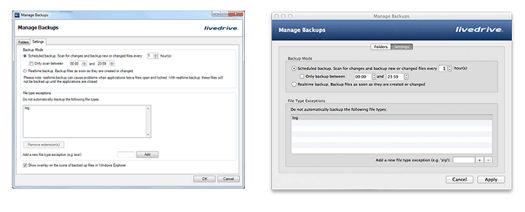
Please note:
Selecting real time scans requires the application to be closed before the scan can occur. For example, if you are working on a Word document, Livedrive won't be able to back it up until you have saved and closed the file.
Real time scan: .PST - If wish to backup your Outlook .pst file with real time scan, Livedrive won't be able to back up the .PST file until you close Outlook, and if Livedrive is backing up your .PST file then Outlook will not be able to be opened.
Livedrive is not a service but an application therefore requires you to be logged in during transfer or scanning of files.
Which Operating Systems are Supported?
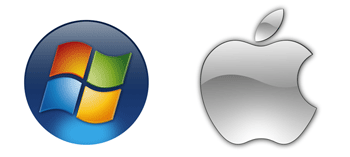 The Livedrive client is supported on multiple operating systems -
The Livedrive client is supported on multiple operating systems -
Windows
Windows XP and above
Windows Server 2003-2008
Mac
Mac OS X 10.6.8 and above
For all other operating systems (for example Linux) you can access stored files through the web portal.
How Do I Restore a Deleted Backup File?
If you delete a backed up file or folder from your computer, it can be retrieved from our servers within 30 days.
Deleted files can be restore through the restore client.
For Windows users, please click here.
For Mac users, please click here.
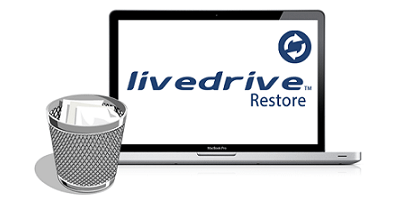
Removal of Livedrive Backup Sets
You can stop Livedrive from backing up individual items from your backup by deselecting the items from the Manage Backups window.
For Windows users, please click here.
For Mac users, please click here.
Removing a backup set from your web portal
The re-instatement of this capability is planned to be issued in a future release. If you wish to remove a computer, i.e. the entire backup set for a computer:
1. Rename Computer
Login to your web portal
Click on Backup
Select the backup set you wish to remove and right click the icon
Select Rename and enter DELETEME
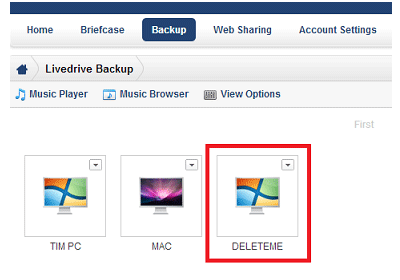
2. Removing Connection to Livedrive Servers
Click on Account Settings
Then select Computers
Click on the Remove link on the DELETEME computer
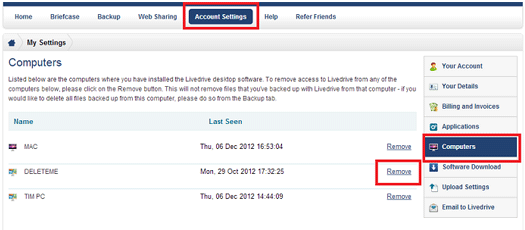
3. Contact Our Support Team
Send our support team an email at the following email address THISEMAIL@ascentive.com to request removal of your backup set.
Please note: Steps 1 and 2 above must be completed before you contact our support team.
Backing up the same computer
If you wish to backup the SAME computer after it has been removed from your account, you are required to uninstall/reinstall the Livedrive Software.
For Windows users, click here.
For Mac users, click here.
Where Can I Download the Software? How Do I Get Updates?
The Livedrive software is available for Windows and Mac computers.
You can download the software from the web portal, either on the Home page or click on Account Settings tab, and then click on Software Download.
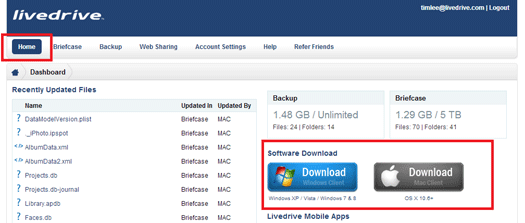
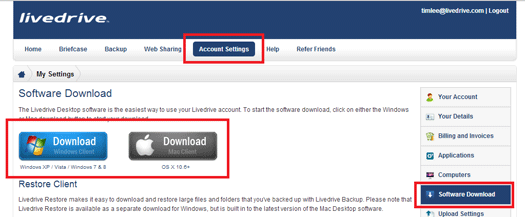
You can make sure you have the latest version of the software by opening the Livedrive Control Panel and choosing the Updates tab, and then clicking on the Check for Updates button or by downloading the versions from your web portal.
Linux Users
We do not have a Linux client.
Windows Users: How to Backup your External USB Hard drive
With Livedrive Backup, Pro Suite or Business accounts, you can backup your external USB hard drives.
Backups are not to be used for archiving. You must at all times hold an original copy of the data in the original location, on the system it was backed up from. If you delete files from your computer that have been backed up, we will remove the corresponding backup from our servers.
As Backup is mirrored copy of the files/folders you select, you must ensure that the device is attached to your computer when running Livedrive.
If the device is disconnected whilst Livedrive is running, then the previously uploaded files will be marked for deletion on your web portal.
Things to Remember When Backing your External HD
- There is a limit of 5TB for any single external drive including NAS devices and USB drives
- You must ensure that the device is attached whilst running Livedrive
- Do not select the root of the external hardrive; only select files/folders within the device
- You must select at least 1 file from your local drive for backup before selecting your external HD files/folders
Please note: We do not support the backup of removable or portable media (e.g. pen drives, CDs, DVDs, flash drives, mobile devices, iPods, etc) due to the way the Operating Systems categorises the devices. Whereas external HDs are read by the OS as local hard drives and therefore these can be backed up with the Livedrive software.
How to Backup your External USB HD
- Ensure that the external hard drive is attached and running on your computer
- Click on the Livedrive icon
- Select Manage Backups
- Expand the letter assigned to the external device
- Select the files & folders within the external HD - Do not select the root of the device for backup
- Click OK
That’s it! Livedrive will now start backing up your external HD. Your web portal will display the backup as a folder within your backup set.
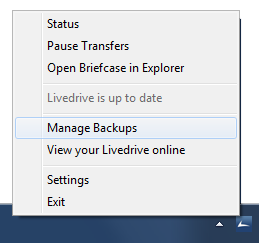
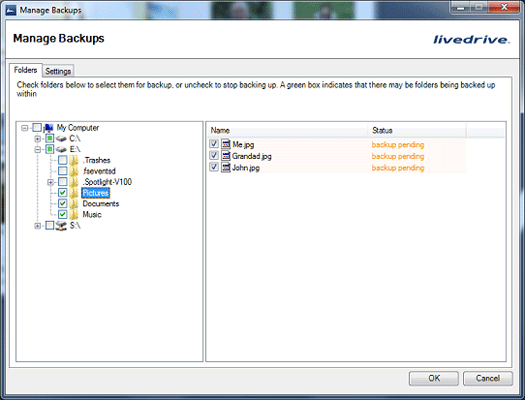
![]() Windows users - how to backup your external usb hard drive.pdf (589.49 KB)
Windows users - how to backup your external usb hard drive.pdf (589.49 KB)
Windows Users: How to Restore Data When Your Computer is Stolen or Lost
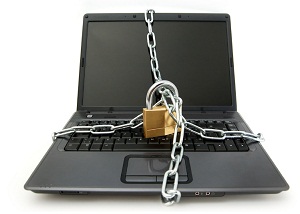 Having your computer lost or stolen can feel like end of the World!
Having your computer lost or stolen can feel like end of the World!
With Livedrive, you can retrieve your cloud data and stop Livedrive from connecting to that computer.
Simply follow these steps:
Stop Connection - Change your password
- Login into your web portal
- Click on the Account Settings tab
- Select Your Details
- Enter your old password
- Enter your new password and confirm
- Click Update Details to reset
- Login to your web portal
- Click on Account Settings and select Computers.
- Click Remove on the computer you wish for Livedrive to stop connection and click OK on pop up window
Both of the above will stop Livedrive from connecting with your computer.
Restore Files
For Backup: Click on Account Settings and select on Software Download and click on the Restore Client Once installed and the installation process is complete, use the restore client to restore your files. Alternatively you can download indiviudal files from your web portal.
For Briefcase: Click on the Briefcase tab, select the file(s), right click the icon and select Download. Alternatively you can install Livedrive onto a new computer, and all files within the Briefcase will be downloaded.
Livedrive Backup - System Exclusion List (Windows)
Livedrive keeps a list of file types that should not be backed up. These include temporary, system and browser files. These files do not contain any useful information - excluding them means you only back up the things that matter to you.
The excluded files and folders are listed below. Please note this list cannot be changed
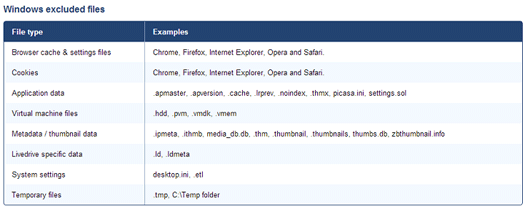
Windows Users: Changing your Bandwidth Settings
To modify your Livedrive Bandwidth Settings:
- Click on the Livedrive icon
- Select Settings
- Click on the Bandwidth tab
Number of connections to use: this setting tells Livedrive how many threads to use to upload a file at any time.
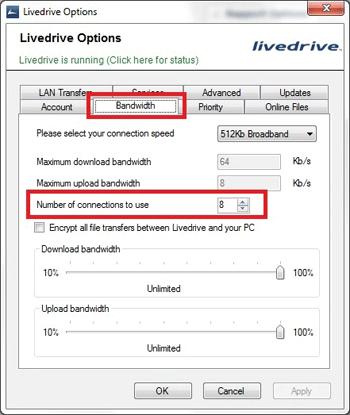
Download and upload bandwidth sliders: this controls how much of your total internet connection bandwidth the software uses.
When these are on 100%, Livedrive will transfer files as quickly as possible – using all of your bandwidth if necessary. If these are reduced, e.g. to 50% then Livedrive will limit itself, never using up more than 50% of the available bandwidth and leaving plenty for other activities.
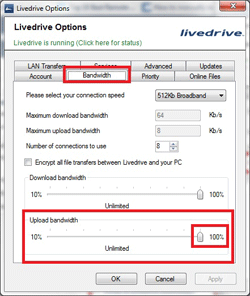

To resolve Livedrive slowing browsing speed or other internet activities please try reducing the sliders. If this doesn't remedy browsing slowness continue to decrease the sliders in further increments until you can browse satisfactorily.
Windows Users: How Do I Enable Encryption in the Desktop Software?
Files stored on our servers are encrypted.This storage encryption is processed by our web service on receipt of the file, rather than by the Desktop Software.
However you can enable encryption between your computer and Livedrive servers during the transfer of your data - more similar to the SSL connection you use when sending data to and from your online bank.
To enable encryption in the desktop software:
- Click on the Livedrive icon
- Select Settings
- Click on the Bandwidth tab
- Enable Encrypt all file transfers between Livedrive and your computer
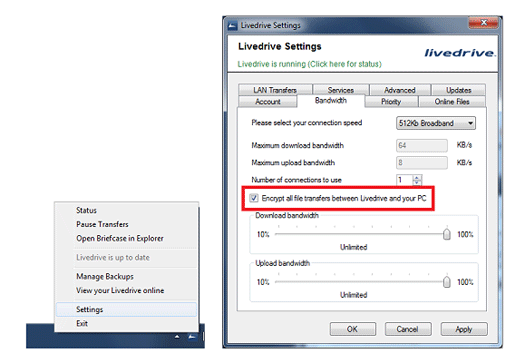
Windows Users: How do I Backup My Outlook .PST Files?
Livedrive supports the backup Outlook (.pst data files).
Please note: If you use Exchange then you will have a .ost file on your local machine and this file cannot be backed up using VSS. Livedrive does not support the backup of live databases such as Exchange and the data files produced by Outlook (.ost). You can only backup emails where they are stored on your computer.
To backup your Outlook PST file to Livedrive you must add the folder where the PST file location using your Manage Backups Window.
To back up your Outlook email you will need to locate of your PST file(s):
Outlook 2010
- Launch Outlook 2010
- Click the File tab in the Ribbon, and then select the Info tab on the menu
- Click the Account Settings tab
- Click Account Settings again
- Click Data Files
- Note down the path and file name of your .pst file. For example, C:\Exchange\Mailbox.pst indicates a .pst file that is named Mailbox.pst located in the Exchange folder on your C: Drive
- Click Close and OK
Outlook 2002 through Outlook 2007
- Launch Outlook
- On the Tools menu, click Options
- On the Mail Setup tab, click the Data Files button
- Note down the path and file name of your .pst file. For example, C:\Exchange\Mailbox.pst indicates a .pst file that is named Mailbox.pst located in the Exchange folder on your C: Drive
- Click Close and OK
Once you have the location of the PST file then navigate to the folder:
- Click on the Livedrive icon
- Manage Backups
- Expand your C:/ drive and find the location of the file
- Select the file for backup
- Click OK
Windows Users: How Can I Restore My Backed Up Files?
Whether you want to restore you files on a new computer or are recovering files due a hard drive crash, Livedrive Restore client lets your browse your Livedrive Backup account, select any file or folder and then restore it straight to your PC!
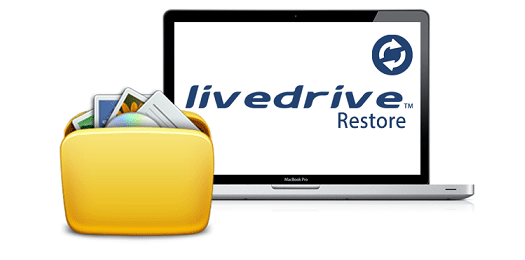
To restore your backed up files and folders
- Login into your web portal
- Click on Account Settings and then click on Software Download
- Download and install the Restore Client
- Once installed, login within your Livedrive email address and password
- Create a folder on your C drive or desktop called LDR
- Within the restore client, navigate to the files/folders you wish to restore and click the Restore button
- Browse to the LDR folder on your C drive
- Click OK and then click the Restore button
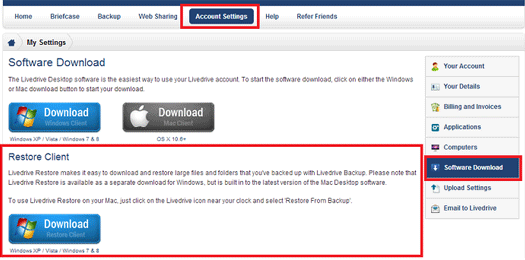
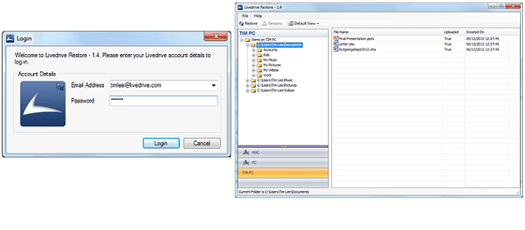
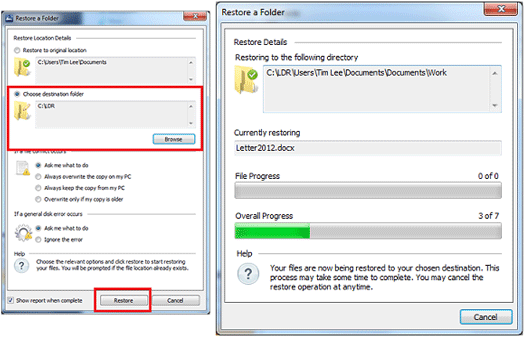
Restoring deleted files or folders
You can restore deleted files and folders with 30 days of deletion
To view your deleted items, click on the Default View button and select Show Deleted Items.
Once enabled, simply follow the instructions above to restore your deleted files or folders.
Livedrive Cannot Connect to Server
The Livedrive software uses ports 50234 and 50235, and our servers have an IP address of 82.129.64.250.
You must ensure that any firewall is configured accordingly.
If your network has a proxy server for all internet traffic you can enter the relevant information within the advanced tab of the Livedrive control panel.
You can always access your files via the web portal without installing the desktop software.
Having Connection Problems?
If the software is having trouble connecting to Livedrive, we would advise you to check the following:
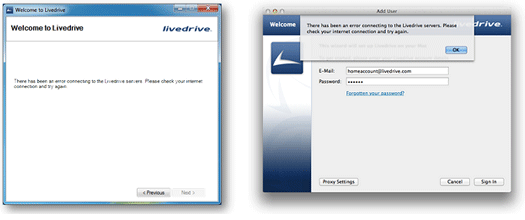
Telnet
It could be that an application or hardware firewall is blocking Livedrive's connection to the servers. To test if there is a connection available,
Open up a Telnet session
- Click on Start
- Then Applications and click Command Prompt
- Type telnet app.livedrive.com 443
- Press the [Enter] key
- Disable 'SSL' via Livedrive icon > Settings (Windows) or Preferences (Mac) > Bandwidth.
- Type telnet app.livedrive.com 50234
Windows Users
For XP, telnet is automatically available
For Vista and 7, click on Start, then go to Control Panel and select Programs And Features. Then select Turn Windows features on or off and then enable Telnet Client
For Windows 8, go to the Start menu, search Control Panel and select Programs And Features. Then select Turn Windows features on or off and then enable Telnet Client
Mac Users
Click on Finder, then Utilities and select Terminal and type the telnet connection above
Results of Test
Fail - If the Telnet test returns with an error similar to cannot connect to host, then it is a software (an application) or hardware firewall issue that you will need to resolve.
Pass - If it connects (and simply displays the command prompt with a cursor ready for the next command), then please try creating a new profile.

Creating a new profile
In some cases an application or program may be restricting Livedrive's connection to the servers from your computer. If the above has been tried and tested with no avail, please try creating a new profile with administrator rights to see whether Livedrive will connect.
Once created please install Livedrive and follow the installation process.
To create a new user profile:
Windows XP
Windows 7 & Vista
Windows 8
Mac
If Livedrive connects successfully, the issue lies within the profile and we would advise you to use the newly created profile.
Still Having Connection Problems?
If you still are having connection issues after checking your firewall settings AND creating a new user profile, please submit a ticket to our support team.
Windows Users: How to Edit Your Backup File/Folder Selection
You can amend your backup selection after your initial backup is complete.
To add a file or folder to the backup selection:
Please note: only select raw data files (documents, videos, music, etc). Do not select your entire user folder or applications, downloads, library, etc.
Method 1
- Click on the Livedrive icon
- Select Manage Backups
- Expand your C:\ and your Users folder
- Find your username
- Select the file or folder you wish to add to backup
- Click OK
Method 2
- Right click on the folder
- Select Livedrive
- Then click Backup with Livedrive Backup
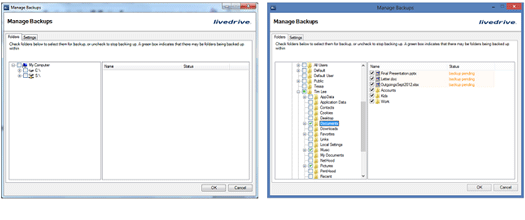
To review or modify the list of files or folders you backup, simply open the Livedrive Manage Backups window.
Any files removed from your backup selection will be marked as deleted online, and will be held for for 30 days before being permanently removed from our servers.
Can I Run Livedrive on a Server?
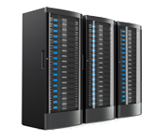 Backup of servers Livedrive can be used to backup your data files on server. Livedrive is compatible with:
Backup of servers Livedrive can be used to backup your data files on server. Livedrive is compatible with:
- Windows Server 2003-2008
- Mac 10.6.8 and above
My File icon Has a Red Arrow – Why?
Files in the web portal marked with an arrow on a red background indicate that the file(s) are not fully uploaded and can therefore not be viewed online, shared or downloaded until they have completed.
You can view the queue of pending uploads at any time via your Status Window.
If there are no pending uploads then you may wish to run an integrity check to ensure the status of your Livedrive is correct.
Please note that the time it takes to upload a file is dependent on the upload speed of your connection - we do not throttle your bandwidth in any way.
Please review our article on connection speed here.
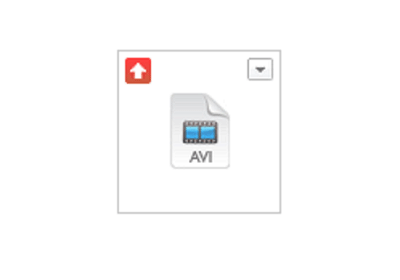
Understanding the Livedrive Status Window
You can check the status of your files through the status window your Livedrive software.
- Click on the Livedrive icon, then click on Status
- Then click on the Detailed Status button
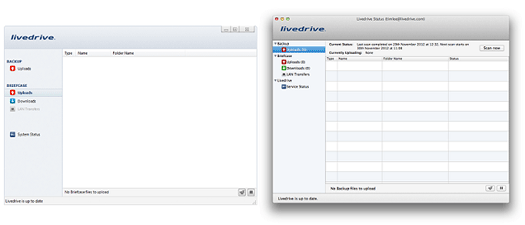
The Upload queue represents the number of files currently queued or uploading to our data servers.
The Download queue represents the number of files that Livedrive is currently downloading from the data centre to your local computer cache. If you don't want to store files locally, you can change the settings in the Livedrive Control Panel on the Online Files tab to not 'Just store files online...'.
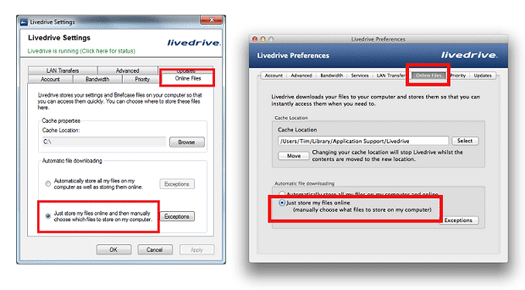
How to Check Uploaded Files
The easiest way to check which files have been uploaded successfully to your Livedrive Cloud is to login to your web portal.
Checking Uploaded Files
- Login to your web portal
- Click on Backup or Briefcase tab (...and for Business Users Team Folders)
Successfully uploaded files will be in full colour.
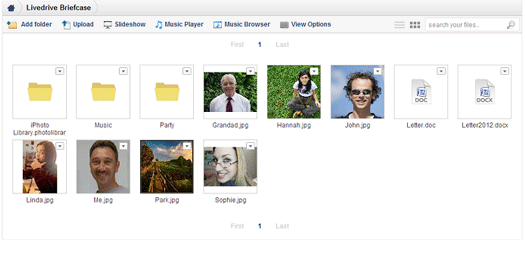
If the file has not yet been uploaded, the file icon will be greyed out with an arrow in the top left corner. The file maybe still in your transfer queue waiting to be uploaded.
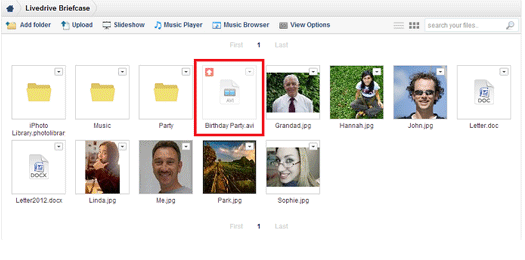
For more information on your Status Window, click here
Windows Users: How to Uninstall Livedrive – Version 1.9.2 and below
You may need to uninstall/reinstall Livedrive if you experience any technical issues when using the Livedrive desktop client software. Once you have done uninstalled Livedrive, you can download and install the latest version of the software via your web portal.
Before performing this process please ensure that any files selected for upload to your Briefcase (if applicable) have completed fully or that you have a local copy as this process will clear the Livedrive cache and remove any partially upload files.
Before Uninstalling
- Click on the Livedrive icon
- Then select Settings
- Click the Stop Livedrive button
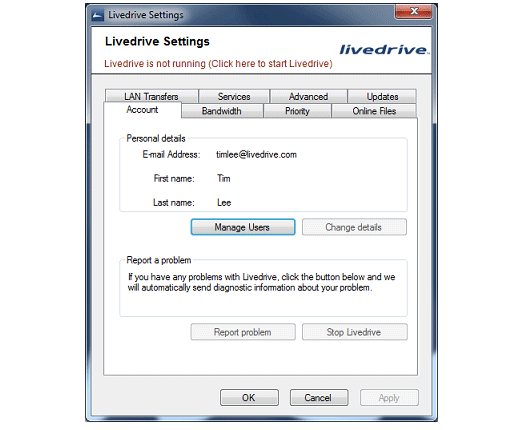
View Hidden Files
Livedrive creates a hidden folder upon installation which requires you to view the folder before renaming or deleting the folder.
To view hidden files/folders
Windows 8: Go to the Start menu and search Computer. Once an Explorer window appears, click on View at the top of your toolbar, then Options, Change folder and search options and then click on the View tab.
Windows 7 & Vista: Click Start and select Computer. Then click on Organize button, select Folder and search options and then click View tab.
Windows XP: Click Start and then select My Computer. Click on the Folder Options… and then View tab.
- Select Show hidden files, folders and drives
- Disable Hide extensions for known file types AND Hide protected operating system files (Recommended)
- Click Apply and OK
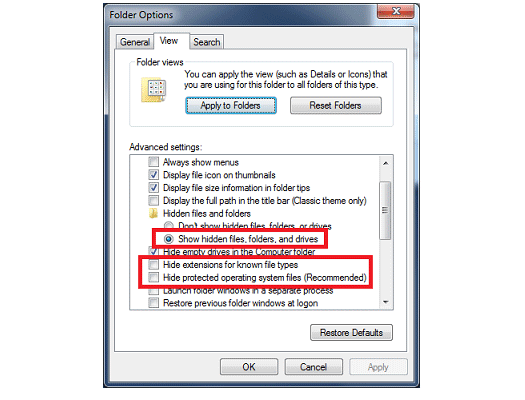
Delete ~LD Folder
- Within your Windows Explorer, click on Local C Drive (C:) to find the ~LD folder
- Rename the ~LD folder to ~LD_OLD
Note: If you do not use Briefcase or you are confident that your files have fully uploaded or are present elsewhere, you can simply delete the ~LD folder.
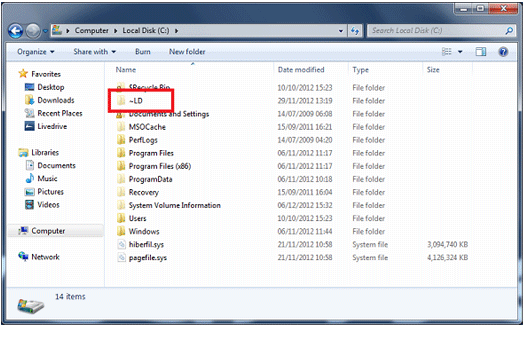
Reset Hidden Files
Once rename or deleted, reset your hidden folders option. See View Hidden Files above on how to find the settings.
- Select Don’t show hidden files, folders and drives
- Tick Hide extensions for known file types AND Hide protected operating system files (Recommended)
- Click Apply and OK
Uninstall Livedrive
Go to Start, then Control Panel and then click on Programs and Features
Select Livedrive and Uninstall
Please ensure all settings are removed
Windows Users: How Can I Stop the Livedrive Software?
You can stop the Livedrive client from within the Livedrive menu option.
Simply, click on the Livedrive icon, the select Settings and click on Stop Livedrive.
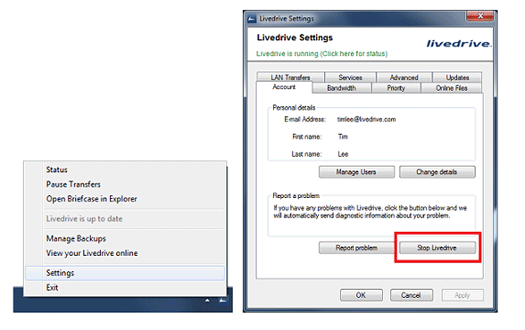
To start Livedrive again,
- Go to Livedrive Control Panel
- Click on Livedrive is not running.
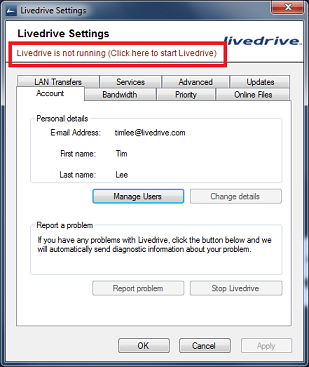
Please note that if you wish to stop Livedrive as it is affecting your internet connection you may wish to simply change the Bandwidth used instead.
Windows Users: How Do I Force a Backup Scan to Start Manually?
Livedrive Backup runs on schedule scan of the files you have selected to backup.
You can however force a scan of your files as follows:
- Click on the Livedrive icon
- Select Status
- Click on Scan Now under the Backup section or click on Detailed Status and press on the Scan Now button
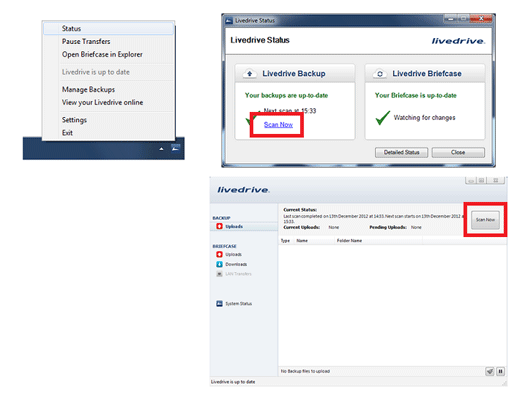
Windows Users: Manage Users - Switching between Livedrive Accounts
Got multiple Livedrive accounts? With Livedrive you can add, switch and remove between your Livedrive accounts.
For use: version 1.13.2 and below
Add a User
- Click on the Livedrive icon
- Select Settings
- Click on Manage Users, and select Add User
- Enter the email address and password of your additional Livedrive account, and follow the installation guide
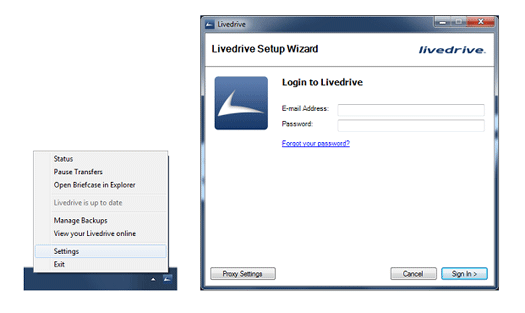
Switching between User Accounts
- Click on the Livedrive icon/li>
- Select Settings
- Click on Manage Users
- Select the username you wish to switch to, and click Switch User
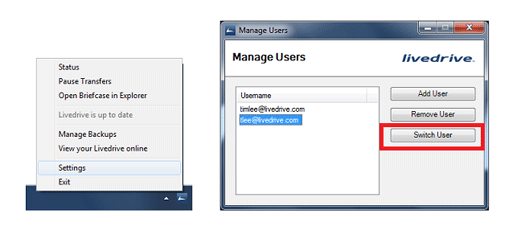
Remove a User
- Click on the Livedrive icon/li>
- Select Settings
- Click on Manage Users
- Select the username you wish to remove , and click Remove User
